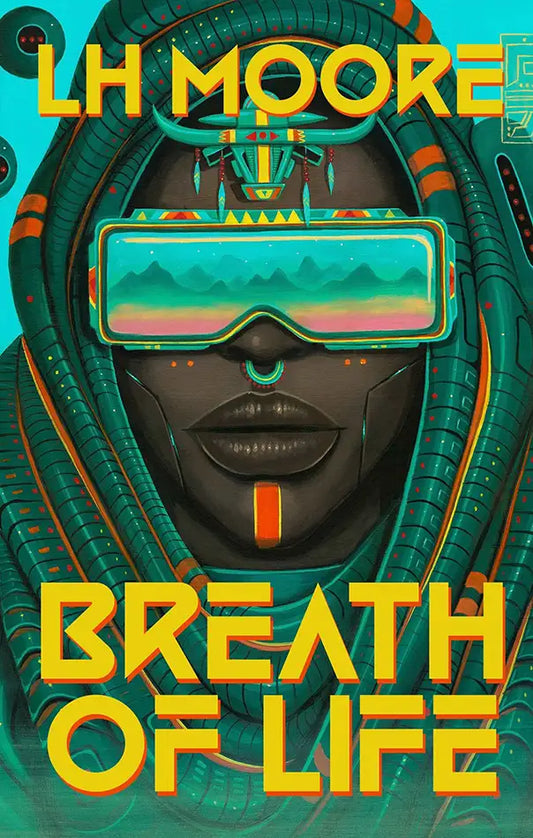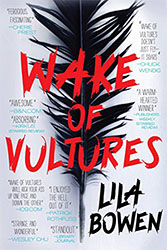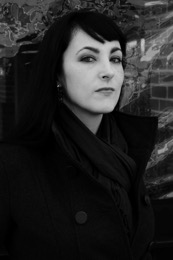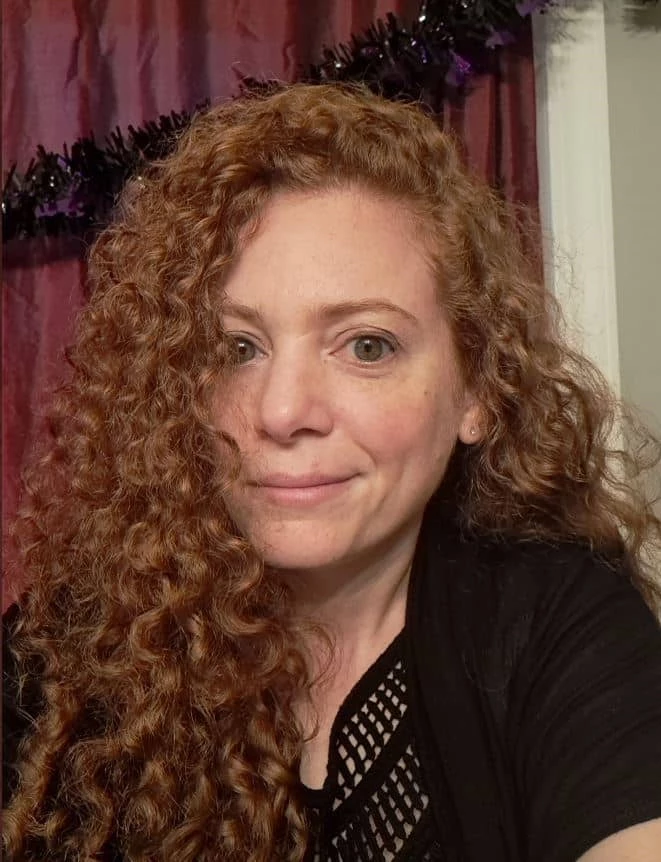
I’m a child of the 80s, which means I grew up watching the movie The NeverEnding Story. When I was very young, the “Magic Mirror Gate” scene always scared me. The music was creepy, I didn’t understand what was happening, and I think someone screams at the end of that scene. When I was a little older, I was able to understand what was happening. Now that I’m an adult, I realize the entire story is building towards that scene, that everything revolves around the two characters seeing their true selves. It’s easy to look in a mirror, but it’s hard to see your true self. Cheesy coming-of-age analogy? Maybe. Honest description of the terror of realizing you aren’t who the world says you are? Absolutely.
Lila Bowen’s Rhett Walker finally knows who he is. Being part monster, part black, part Comanche, part girl, and part shadow, his pie chart adds up to more than 100%. And just because he’s faced his true self, it doesn’t mean he likes who or what he is. But Rhett has a job to do, and people who are counting on him. Dealing with his personal frustrations will have to wait for a quieter day. Full of piss and vinegar, he faces down his own Magic Mirror Gate every day. These days, he mostly likes the face that looks back at him in the mirror.
If “Asylum of Cuckoos” is your first taste of Lila Bowen’s supernatural weird west fantasy, you’re in for a treat. With a landscape as unforgiving as the characters, decisions that cut like knives, and a redefinition of the phrase “of monsters and men,” Bowen’s Shadow series is weird western for a new generation. In her own words, the series is Lonesome Dove meets Buffy the Vampire Slayer. The first novel in the series, Wake of Vultures (2015) won the Fantasy Book of the Year award from RT Book Reviews, and was nominated for the James Tiptree Jr award. Conspiracy of Ravens followed in 2016, and October 2017 brought Malice of Crows to bookstore shelves. Bowen is currently working on book four in the series. Although “Asylum of Cuckoos” takes place within the plot line of the third novel in the series, this story functions beautifully as an introduction to the characters, the world, and the overarching plot line.
Lila was kind enough to talk with me about the behind the scenes of this story, everything from researching railroads and life of the 1800s, to how the environment of writing diverse characters has changed in the years since she completed the first novel in the series, and much more.
You’ll notice the second half of our interview veers into Star Wars territory. What do weird westerns have to do with Star Wars? Well, more than you’d think. But besides that, we’re talking about Star Wars because Lila Bowen is the pen name of Delilah S. Dawson, famous for the Star Wars novel PHASMA. It’s been an exciting few years for Delilah; she is living the Star Wars nerd dream! With ComicCons, Star Wars events, conventions, and everything in between, she still finds time to write across the genre spectrum and work with other incredible authors and artists. Just wait till you see what she’s working on with Kevin Hearne! I am not kidding when I say her project with Kevin Hearne could break the internet.
Her other work includes the Bludseries, the Ladycastle graphic novels, the YA novels Servants of the Storm, Hit, and Strike, and her short stories have appeared in the anthologies Carniepunk, Unbound, Three Slices, and Violent Ends. Active on Twitter and on her blog, she’s got plenty to say about the publishing industry, including how to survive being a writer and how to get enough sleep. If you enjoy violence, adventure, and tough conversations, Lila Bowen’s work is for you.
Be warned, spoilers for Wake of Vultures ahead! Another fair warning: after reading this interview, getting your hands on Wake of Vultures may become essential.
APEX MAGAZINE: The protagonist of “Asylum of Cuckoos” is using the first name Rhett, which leads me to believe this short story takes place a little later in the Shadow series. For everyone who just read “Asylum of Cuckoos” and said to themselves, “this is fantastic, I need more!”, what should they know about the Shadow series?
LILA BOWEN: This story takes place sometime during the travels of Malice of Crows, which is the third book in the Shadow series. If you like what you see, I’d very much recommend you pick up Wake of Vultures, the first book, and just keep on reading. I bill the series as Lonesome Dove meets Buffy the Vampire Slayer.
But if you’re looking for the tl;dr, Rhett grew up as an indentured servant in Durango, an 1800s alt-history version of Texas. He appeared half Black, half Native American, and all female to the drunk good-for-nothings who “adopted” him, but as soon as he was out on his own as a teen, he chose to live life as a man. There’s a pivotal scene in book two, Conspiracy of Ravens, that shows his emotional transition and the moment Rhett’s pronouns change. Unlike most folks in Durango, Rhett doesn’t judge people based on how rich or white they are; he only cares how they treat other people and animals, especially horses.
Wake of Vultures (Shadow Book 1) by Lila Bowen
AM: This story takes place in the Wild West, and has plenty of familiar trappings—dusty roads and wagons, small town jails, six shooters, cowboys, and horse thieves. But it also has much that isn’t expected—genderfluid characters, immigrant stories, multi-racial characters, shape-shifters, and more. What kind of research did you do to get the feel of the Old West, while at the same time ensuring you got the details right on how your diverse characters would respond to this world they were trapped in?
LB: This is a tough question for me, as I don’t think that as a straight, white, cis woman, I would attempt to write and sell Wake of Vultures today. I wrote the book in 2013, sold it in 2014, and saw it published in 2015, and the climate around writing diversity and own voices was different then. That being said: Because Rhett starts out not knowing his roots and because he discovers his gender and sexuality on his own terms, my job was to show his emotional evolution from a scared, angry, subjugated girl to a cocky, angry, competent man who has chosen to live life on his own terms and punch anybody who says differently in the teeth. Since the world is made up and the history is fuzzy, I had a lot of leeway in telling an adventure tale about hunting monsters.
The details that I felt most confident capturing were the world building touches that make Durango feel real. I came up with much of the story while trail riding in the mountains and staring at the rump of an obstinate donkey named Earl, so I know what it’s like to spend time in a saddle. The one bit of research that I considered essential was finding out where people used the bathroom while working in a train camp, and I had a lovely email exchange with the Railroad Museum of Pennsylvania. The answer? Anywhere. Those guys lived rough.
AM: I’ll happily admit I was startled when Rhett pulls the blanket off the person sleeping in the jail cell and sees, well, I won’t say because it is a spoiler. Rhett has already had to face himself, and accept himself for who he is, so to be faced with this? You are a cruel writer! What would your honest reaction be, if you saw the Lila Bowen version of what Rhett saw in that jail cell?
LB: Tough question! The big difference here is that Rhett hates himself, and I think I’m pretty great. Maybe we’d just go shopping for boots to share.
Lila Bowen (aka Delilah S. Dawson)
AM: I felt terrible for Child. During the scene where Rhett escapes the jail cell, and leaves Child behind, what was your thought process for this scene? Rhett admits to being a monster, talks about giving himself what he deserves, and finishes by thinking Child lucky. It’s boiling under the surface, what Rhett still needs to process about himself. The entire scene just fell on me like a ton of bricks. Can you tell us more about Rhett’s view of himself, and what’s next for him?
LB: Well, since this story takes place during book 3, what’s next is book 4, Treason of Hawks, the final story in Rhett’s saga. Wake of Vultures was about Rhett becoming the Shadow, Conspiracy of Ravens was about Rhett becoming a man, Malice of Crowsis about the terror of loving and being loved, and Treason of Hawks is going to be about … well … I don’t want to spoil it. Let’s just say the white gloves are off and if you think Child is cruel, I can’t wait for you to meet El Rey.
AM: I’d be remiss in my duties as an interviewer if I didn’t ask: How in the world did you land the Star Wars PHASMA novel deal? Because Wow! Also? Congratulations on hitting the New York Times bestseller list at #10!
LB: Thanks! There’s no true path to writing a Star Warsbook, but I suspect several points played in my favor. For one, I have a solid career with 10+ books on the shelf and a reputation for being easy to work with and hitting deadlines. For another, my life is Star Wars all the time already, and I know the world inside and out. Lastly, I think it has to do with what a great fit PHASMA is with the rest of my catalog. Violent women on adventures is pretty much my brand.
AM: You do a lot of conventions, ComicCons, and other events. In the last handful of months, you did GenreCon, NYCC, NOLA StoryCon, and DragonCon. At these events, you often have a full schedule of panels, autograph sessions, photo ops, and other appointments. All that talking. All those people. Having to smile and have energy all day. How do you do it? On a lighter note, what is the nicest experience you’ve had at one of these events?
LB: At home, I’m Mom. I have carpool, food, shopping, cleaning, taking the dog out, all that good stuff—on top of a full schedule of drafting and editing. So, travel, for me, is a vacation, even when it involves this kind of work. I do it by having a good breakfast and a positive attitude and looking at it as what it is: another aspect of my job. Although I’m an introvert, I love cons because I automatically have something to talk about with anyone I meet, thereby cutting out the small talk that makes my teeth itch. I love meeting readers, and being on panels feels like playing a game show with my friends. I also take great solace in meeting other writers and hanging out at the bar, as working from home can be very isolating. I always leave cons energetic and full of ideas and fond memories.
There’s no way I could isolate it down to one experience. I held a koala and went snorkeling while at GenreCon in Australia; toured the French Quarter at NOLA StoryCon while brainstorming with my cowriter, Kevin Hearne; and did an interview in the Millennium Falcon at Star Wars Celebration. My life feels very charmed!
AM: You publish a massive variety of fiction, everything from weird westerns, to fantasy graphic novels, to southern gothic, to steampunk paranormal romance, to Star Wars tie-ins, to everything in between. Do you have a favorite subgenre of sci-fi and fantasy to write in, or favorite themes to write about?
LB: My favorite genre is whichever one I’m writing in at the time. I started writing in 2009, and from the beginning, I knew that I was going to be hopping around constantly. My agent has learned to go with it! In any story I tell, I’m generally looking for some way to flip a trope, especially when it involves giving power to people who, in our current world, feel powerless, most often women.
AM: You subtly mentioned on your website that you’re working on a new project with Kevin Hearne? Are you able to tell us anything about this project? The two of you working your magic together? This could break the internet.
LB: Oh, I don’t need to be subtle—I can tell you all about it! Kevin Hearne is one of my best friends, and together we’re writing The Tales of Pell, a book series billed as The Princess BridemeetsTerry Pratchett. The first book is Kill the Farm Boy, and the entire series is all about flipping the old fantasy tropes. The Chosen One, the girl in the chain mail bikini, the Dark Lord, the Beast—we’re scrambling everything up and having a great time doing it. Kill the Farm Boy will be out next July. It’s already up for pre-order on Amazon, and it’s going to make you laugh until you snort mead out your nose.











